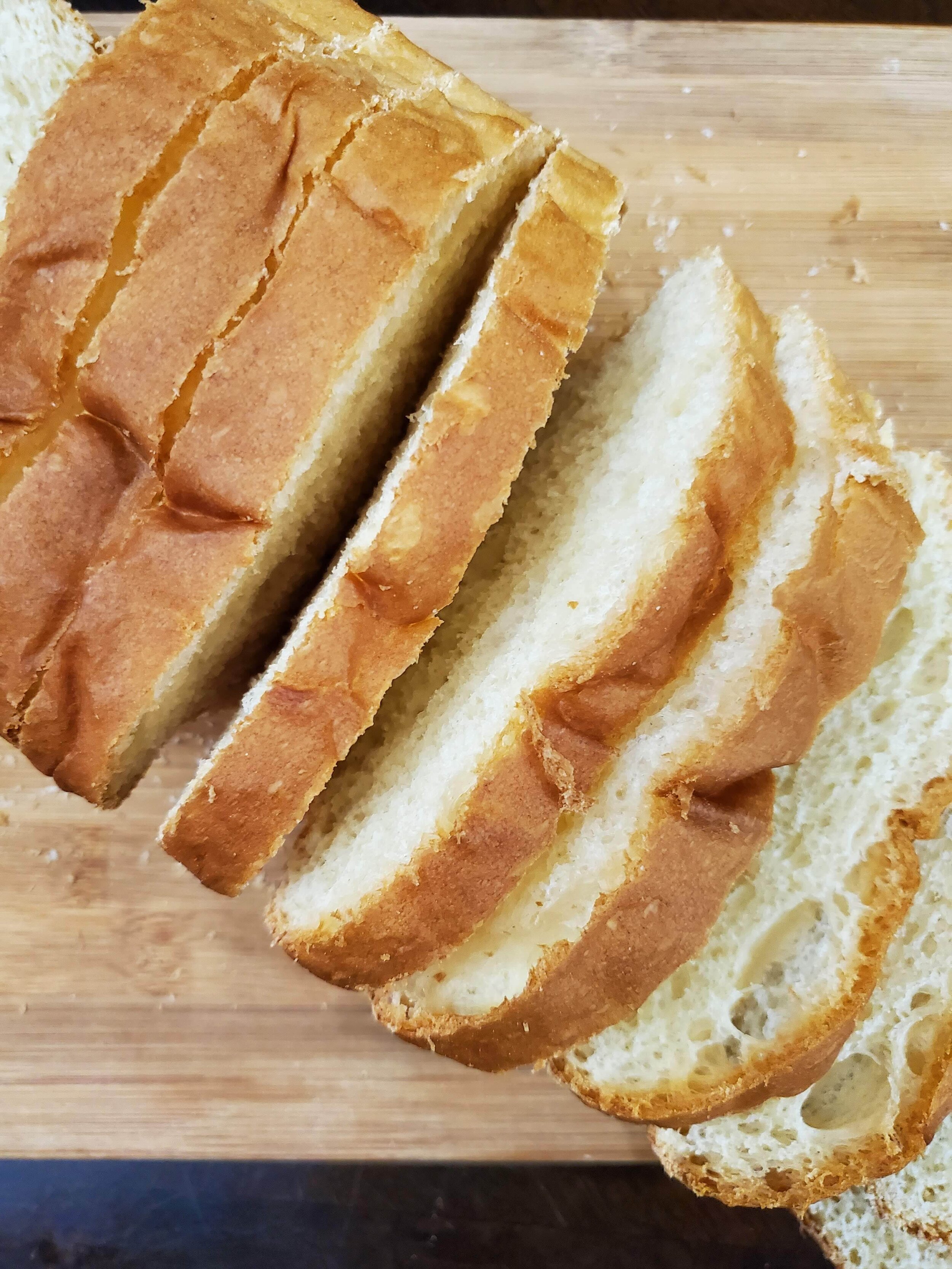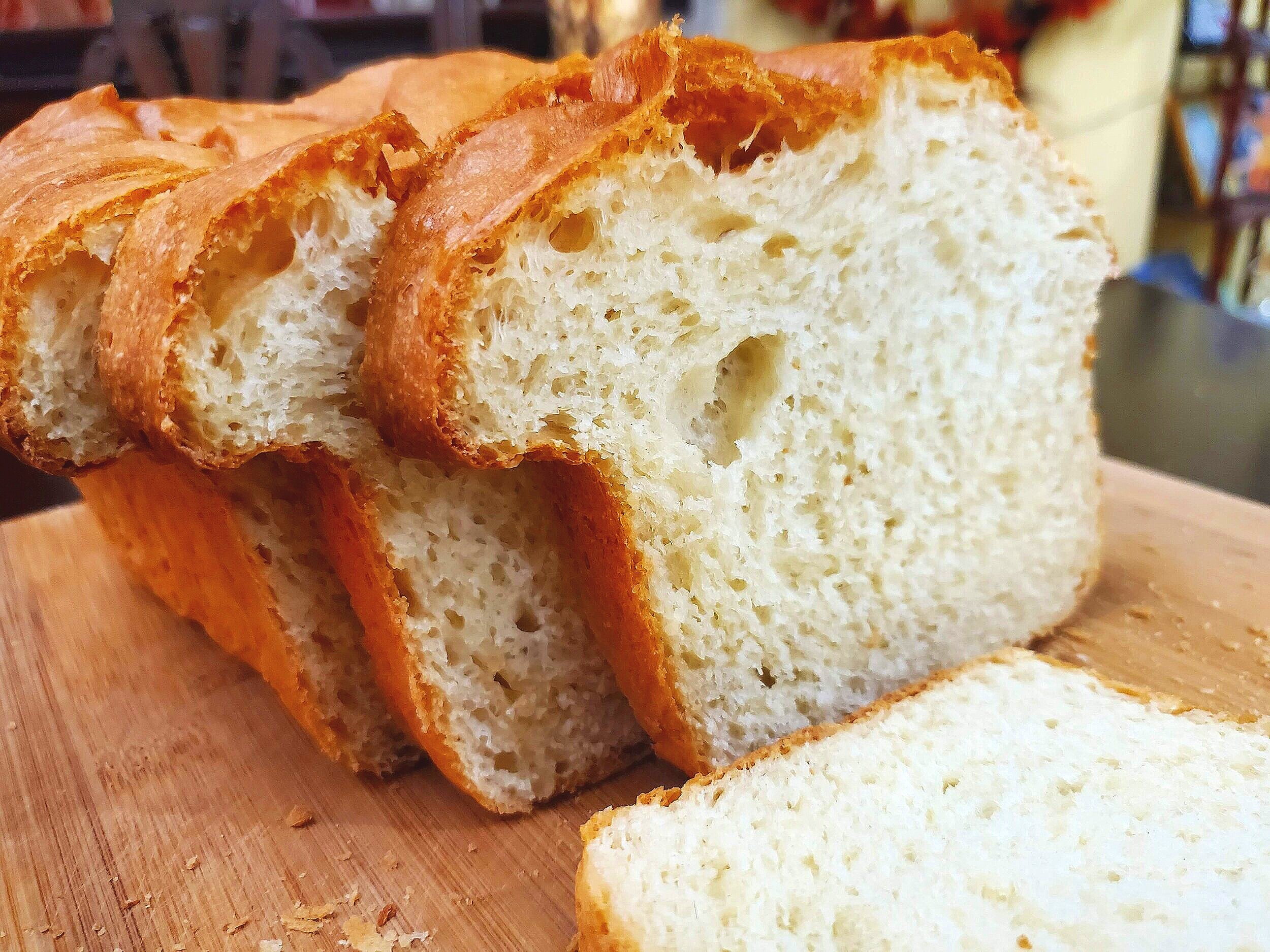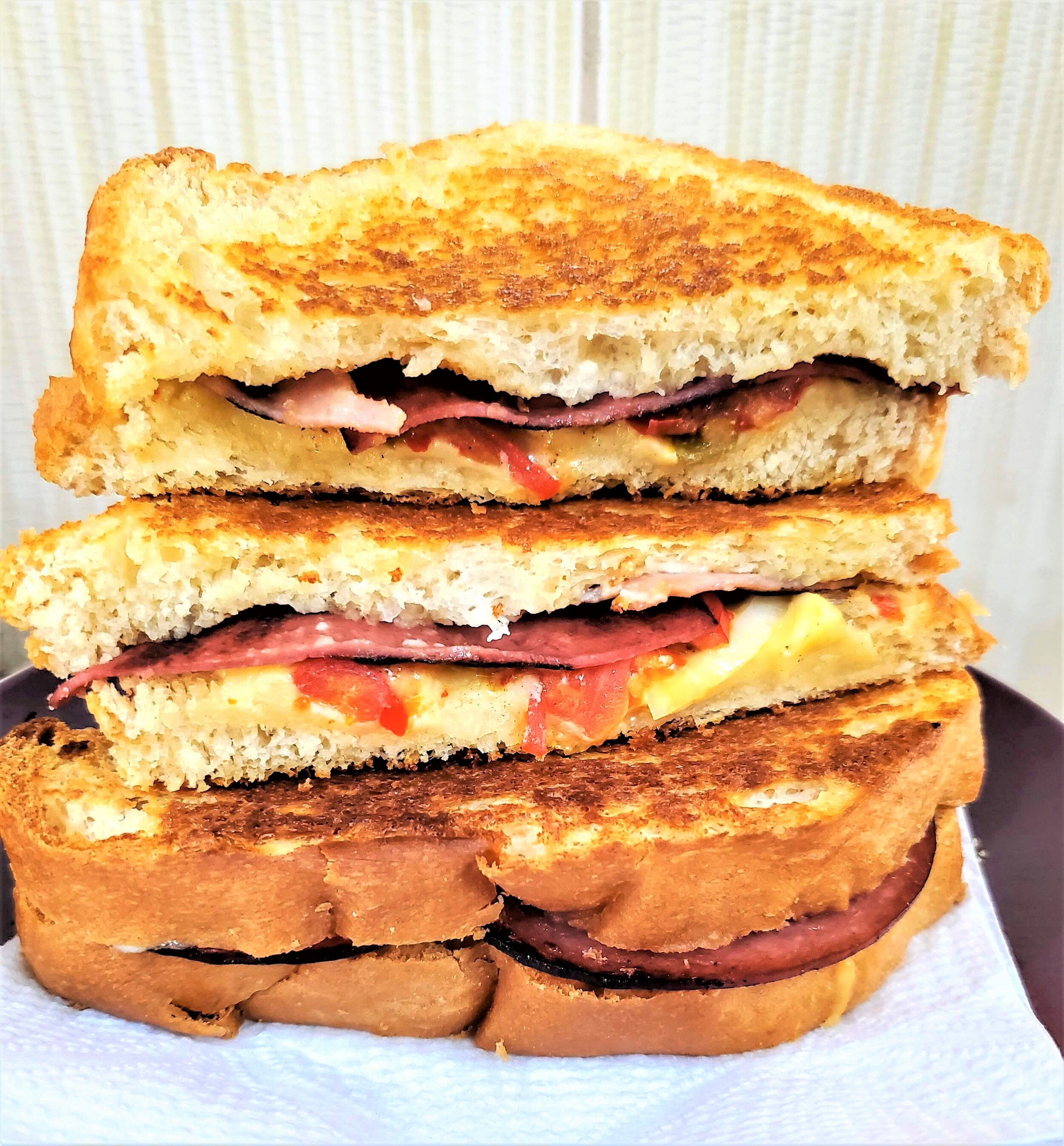Homemade Sandwich Bread
This recipe uses just 7 ingredients, and an assisted rising method which lets you have homemade sandwich bread in less than 2 hours!
Homemade sandwich bread is basically a loaf bread which you cut into slices for sandwiches. Usually, making homemade bread takes 3-4 hours to make, but this recipe uses an assisted rise from the oven which cuts the time in half. If you have the time to wait the 4 hours, then feel free to revert to the traditional method of leaving in a warm place.
This particular recipe yields 2 loaves, which I pre-slice and stored in a sealed zip lock bag. It will stay fresh for about 3 days before starting to show signs of drying out. I usually cut each loaf into 12- 14 slices which are excellent as grilled cheese sandwiches. I would advise that you butter the outside of the sandwiches and toast in a pan or griddle to get the best tastes out of this sandwich bread. It is also toddler approved! Other ways to use this bread are as simple toast with butter or jam or nutella, french toast, grilled cheese with sausages…basically any sandwich as well …lol
Check out the video below to see how I made this delicious bread!
You would notice the recipe calls for Shortening. Ever wondered what the difference between shortening, butter and even margarine is?
Learning Time!
What is the Difference between Shortening, Butter and Margarine:
Butter is a fat made by churning cream until it forms a solid state. It consists of 80% fat. The remainder consists of water, salt, other flavour additives and milk solids. It comes in salted and unsalted versions, which should not be used interchangeably. Most sweet recipes calls for unsalted versions since you want to control the salt content.
Shortening is 100% fat! It consists of oils that are hydrogenated to allow it to remain semi solid. It is used best in pastry crusts and bread. Examples of this are Crisco, Prize and Cookeen.
Margarine is made from oils, not cream. It is much lower in fat than butter ( some can be as low as 40% fat), and contains water and other additives to give it some flavour.
Because of the fat content in butter and shortening, they shoulnt’t be used interchangeable when baking. There will be a noticeable different in texture of your baked good. Margarine can work as a cheaper replacement for butter in baking, but you have to be mindful of the fat content. If the margarine has less than 50% fat content, then this will affect the richness of the final baked product. The best margarine for me to use in baked goods is Blueband.
Ingredients:
6- 6 1/2 cups flour
1/2 cup powdered milk
2 packets of yeast
2 cups warm water
1 teaspoon sugar
2 teaspoon salt
2 tablespoons melted shortening
Butter for brushing
Method:
Add water, yeast and sugar to a mixing bowl, and stir. Allow to bloom for 5 minutes until foamy. Add 3 cups flour, powdered milk, melted shortening , and salt. Mix with a hand mixer for 3 minutes. You can do this by hand using a dough whisk. Add the remaining flour and knead for 10 minutes. Form into a ball, place in a bowl and allow to rest until double in size. This takes about 1 hour in a warm place, OR 20 minutes in your oven set at 170 degF.
Punch down the dough to release the air and knead for 10 minutes. Divide the dough into 2, roll out each into a rectangle, roll up from one side like a jelly roll, pinch the ends and tuck under the roll. Place in a 8 x 4 buttered loaf pan. Let rise again until doubled. I use my oven for 15 - 20 minutes.
Bake at 350 degF for 30-35 minutes until golden on top, and sounds hollow when tapped. Immediately remove from the baking pan, brush with butter and cool on a wire rack.




